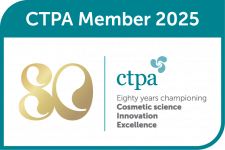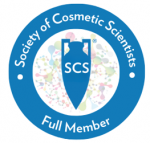Achieving Microbiological Quality and Safety in Cosmetics – Part 1.
Introduction
One of the most critical aspects of ensuring safety in cosmetic products is controlling the microbial safety of all products on sale, for the whole length of their selling and usage lifecycle. It is a complex area and I can’t do it justice in just one article so I will break it down over more than one. This month’s blog explains what a microbe is and why it is so critical when checking the safety of cosmetic products.
What is a microbe?
A microscopic organism is a bacterium, fungus or yeast when we are considering cosmetic safety. They are present everywhere, including in water, soil, air, animals, plants, food, and the human body. Many microbes are beneficial, like those used in food fermentation. Others are pathogenic and can cause diseases in humans, animals, and plants. They are fast-growing and very adaptive.
They need specific conditions in order to grow:
- water
- nutrients (e.g. the fats and oils found in many cosmetic products)
- oxygen
- a temperature that they like (the temperature range can be different for different organisms)
- Optimum pH
All these conditions will be available in a manufacturing area and therefore it is crucial to maintain high standards of hygiene and follow the principle of Good Manufacturing Practice (GMP). Many of these conditions are also available in a cosmetic product and packaging which is why microbiological safety cannot stop at the factory door. But these conditions also give a hint as to how microbial growth can be minimised:
- a product without water (or low access to available water – ‘low water activity’)
- airtight packaging e.g. aerosol
- manufacture at a high temperate to kill any microbes before packaging
- high or low pH products
Microbiological Quality Requirements – Purity and Stability
Microbiological Purity is related to each batch that is made – it must not have too many microbes and must be within specified limits. This is determined with two types of tests:
- quantitative– total viable count (TVC)
- qualitative– absence of specified organisms in an amount of material (1g)
Microbiological Stability is checking that each recipe prevents the growth of microorganisms, so that the product remains stable during the life of the product. This is tested using the ‘challenge test’ (Preservative Efficacy Test – PET).
Why is it important for cosmetic products?
Cosmetic products are applied to the body (skin, hair, oral cavity) repeatedly. In a healthy person, the skin is a very effective barrier to most ingredients and chemicals. If the skin is compromised (including having a tiny cut) or the product is applied to areas such as the eye, then the skin barrier can be crossed and microbial contamination can enter the body and cause problems. Compare this with possible microbial contamination in food – food is ingested and the very low pH in the stomach is a natural and effective defence against microbial contamination. But even in this case, we know that microbes can and do infect the body. For cosmetics the limits are <100cfu/g for baby products or eye products, or <1000cfu/g for all other products.
Hence, the microbial safety of each product is included as part of the safety assessment process. Sometimes no testing is required – using the justifications above, plus other things such as high salt content, high alcohol content, low water activity etc. Where testing is required, a specialist laboratory is needed. A number of these laboratories are listed in the FAQ section of the GCS website under the section “What is a challenge test / preservative efficacy test (PET)?”
Safety Assessor Qualifications
MSc (Distinction), University of Strathclyde
BSc (Hons) Chemistry, University of Nottingham
Certificate - Safety Assessment of Cosmetics in the EU, Vrije University Brussels
Get in Touch
If you would like to discuss any of your products or ranges, please fill out our contact form




